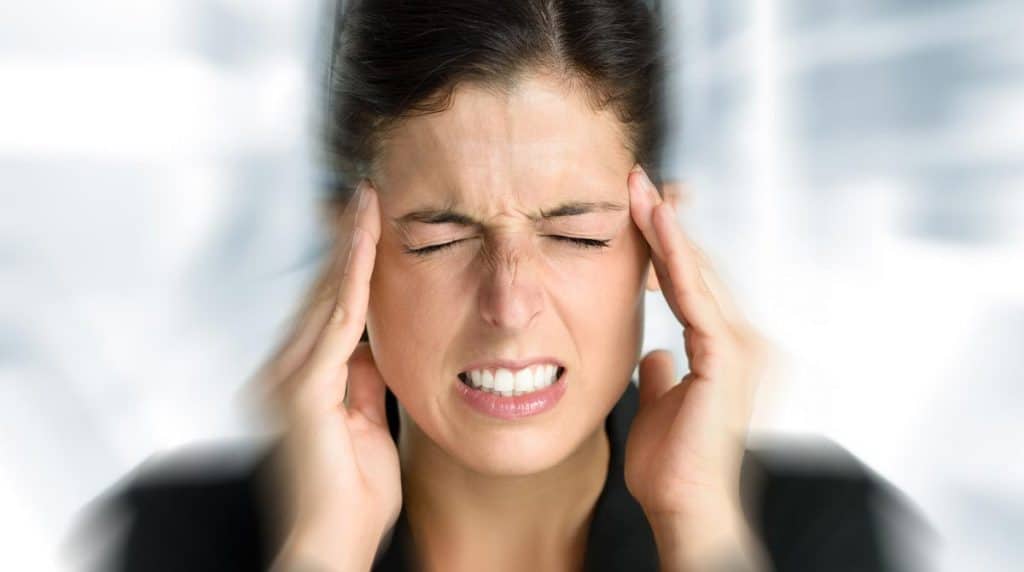Migraines
Migraines


If you’ve experienced a migraine, you know how the pain and other symptoms can bring everything to a halt.
There are multiple ways to control a migraine. Read on for the latest insights.
What is a migraine?
Who gets migraines?
Impact on quality of life
Migraine symptoms
- Felt one side of the head or behind the eye
- Pulsating (throbbing) pain
- Moderate or severe intensity
- Worsened by, or makes you avoid, physical activity.
Also, during the headache you have at least one of:2
- Nausea and/or vomiting
- Light sensitivity (photophobia) and sound sensitivity (phonophobia).
In children, attacks tend to be shorter and abdominal symptoms are more likely.9
Migraine phases

Source: American Migraine Foundation.10
A migraine attack has four phases (stages):10,11,12
- Prodrome: the “pre-headache” phase that signals the start of an attack, hours, even days, before the headache. Prodrome symptoms may include mood changes, fatigue, sensitivity to light and sound, insomnia, nausea, constipation or diarrhoea, and muscle stiffness, especially in the neck and shoulders. Symptoms unique to the prodrome phase include yawning, food cravings and frequent urination.
- Aura: a temporary sensory disturbance that lasts 5-60 minutes and is usually visual, such as seeing geometric patterns, lights or blind spots. Other examples of auras are phantom smells, or confusion. Aura affects 20% of migraine sufferers.
- Headache: Lasts from several hours to three days. Besides pain, headache phase symptoms can include nausea, insomnia, anxiety, and sensitivity to sound, light and smell.
- Postdrome: the “migraine hangover”, with after-effects such as fatigue, body aches, trouble concentrating, dizziness and photophobia. Even though the headache is over, you are still experiencing an attack and should avoid aggravating triggers.
Not everyone experiences all four phases with each attack, and symptoms can overlap significantly between phases.12 Understanding migraine phases helps you manage your condition. Symptoms associated with the prodrome and aura phases can serve as warning signs, so you can take action to lessen the severity of the oncoming headache. Identifying and treating an attack early on can even help sometimes to prevent symptoms.11
What causes a migraine?
Migraine triggers
- Stress
- Irregular sleep schedule
- Hormonal changes
- Alcohol
- Weather changes
- Diet, especially processed foods and additives
- Dehydration
- Light
- Strong smells
- Certain medication overuse
Diagnosing migraine
Treating a migraine
Medications
Prevention and lifestyle management
Treatment is available.
STOP MIGRAINES AS THEY START
For more information speak to your health care professional
Medical References
- European Migraine and Headache Alliance. Migraine. No date. Available from: https://www.emhalliance.org/headache/
- Cutter, E. How to Diagnose Migraine. American Headache Society. January 2021. Available from: https://d1fakw34cbtrm5.cloudfront.net/PDFs/Migraine-Quick-Guides/AHS-First-Contact-HowToDiagnose_Migraine.pdf
- Migraine Research Foundation. Migraine facts. No date. Available from: https://migraineresearchfoundation.org/about-migraine/migraine-facts/
- European Migraine and Headache Alliance. Tension-type headache. No date. Available from: https://www.emhalliance.org/headache/#tension
- Steiner, T.J., Stovner, L.J., Jensen, R. et al. Migraine remains second among the world’s causes of disability, and first among young women: findings from GBD2019.2020. J Headache Pain 21, 137. Available from: https://pmc.ncbi.nlm.nih.gov/articles/PMC7708887/
- The Economist Group. The challenge of migraine in South Africa. 2022. Available from: https://impact.economist.com/perspectives/sites/default/files/economist_impact_the_challenge_of_migraine_in_south_africa.pdf
- Statistics South Africa. South Africa’s population surpasses the 63 million mark. July 2024. Available from: https://www.statssa.gov.za/?p=17430
- Buse, D. et al. Assessing and Managing All Aspects of Migraine: Migraine Attacks, Migraine-Related Functional Impairment, Common Comorbidities, and Quality of Life. 2009. Mayo Clinic Proceedings, Volume 84, Issue 5, 422 – 435. Available from: https://www.mayoclinicproceedings.org/article/S0025-6196(11)60561-2/fulltext
- World Health Organisation. Migraine and other headache disorders. March 2024. Available from: https://www.who.int/news-room/fact-sheets/detail/headache-disorders
- American Migraine Foundation. Migraine Signs and Symptoms. 2023. Available from: https://americanmigrainefoundation.org/migraine-signs-symptoms/
- American Migraine Foundation. The timeline of a migraine attack. January 2018. Available from: https://americanmigrainefoundation.org/resource-library/timeline-migraine-attack/
- Association of Migraine Disorders. What is migraine? No date. Available from: https://www.migrainedisorders.org/migraine-disorders/
- Migraine Research Foundation. Migraine triggers. No date. Available from: https://migraineresearchfoundation.org/about-migraine/migraine-triggers/
- International Headache Society. Headache Awareness Month. June 2024. Available at: https://ihs-headache.org/en/resources/migraine-awareness-month/
- The Migraine Trust. Diagnosis. 2021. Available from: https://migrainetrust.org/live-with-migraine/healthcare/diagnosis/
- National Health Service Inform. Migraine. Updated September 2024. Available from: https://www.nhsinform.scot/illnesses-and-conditions/brain-nerves-and-spinal-cord/migraine/
- National Health Service Inform. Migraine treatment and prevention. Updated September 2024. Available from: https://www.nhsinform.scot/illnesses-and-conditions/brain-nerves-and-spinal-cord/migraine-treatment-and-prevention/
IN5053/25






